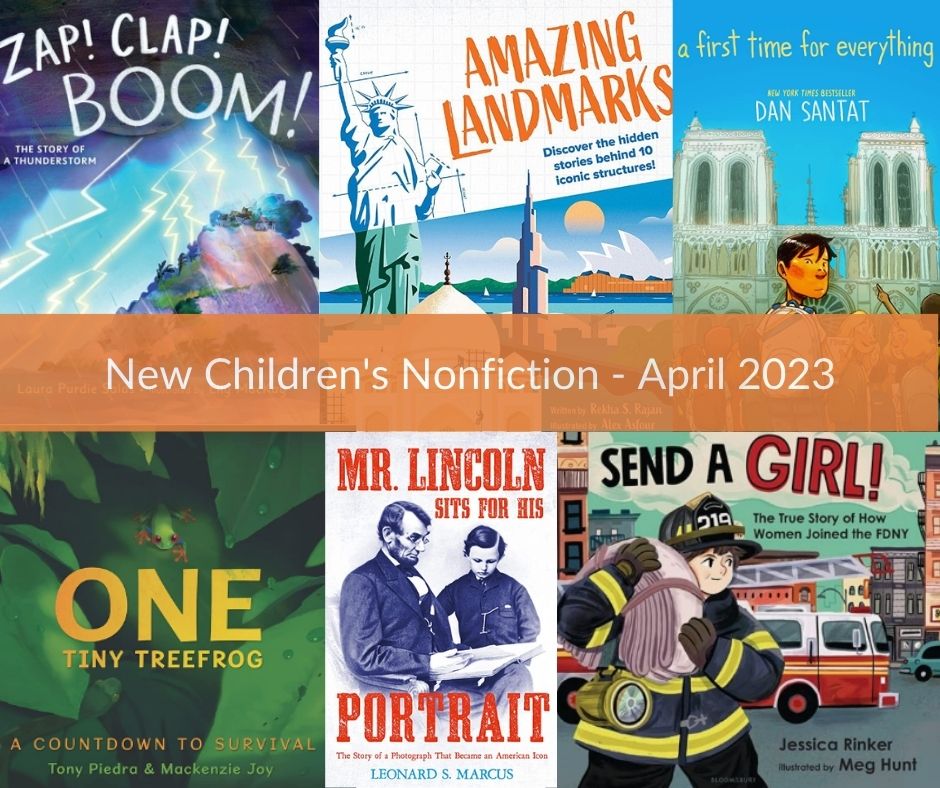
Young Readers
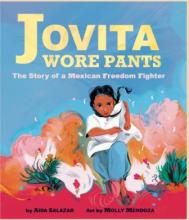
Jovita Wore the Pants: The Story of a Mexican Freedom Fighter by Aida Salazar, art by Mendoza
Jovita dreamed of wearing pants! She hated the big skirts Abuela made her wear. She wanted to scale the tallest mesquite tree on her rancho, ride her horse, and feel the wind curl her face into a smile. When her father and brothers joined the Cristero War to fight for religious freedom, Jovita wanted to go, too. Forbidden, she defied her father's rules - and society's - and found a clever way to become a trailblazing revolutionary, wearing pants! This remarkable true story about a little-known maverick Mexican heroine is brought vividly to life by her great-niece and Américas Award-winner Aida Salazar, and Eisner Award-honoree Molly Mendoza.
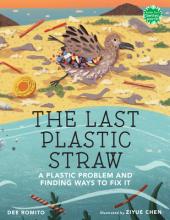
Learn how and why a useful, 5000-year-old invention has become a threat to our planet--and what you can do about it--in this history of the simple straw.
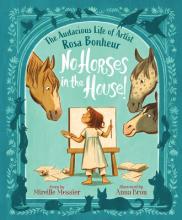
Rosa Bonheur loved to draw animals. She was good at it too! Unfortunately, in nineteenth-century France, girls were not allowed to be artists. But Rosa didn't let that stop her. In this fictionalized account of her early life in Paris, Rosa studies art at home, bringing a menagerie of animals into the apartment to study up close. When she is kicked out of the horse market for sneaking in wearing boys clothing, Rosa must think creatively to challenge the rules in pursuit of her dream of becoming a world-class realist painter and artist.
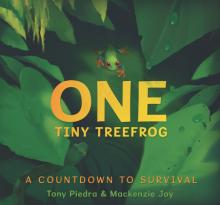
One Tiny Treefrog: A Countdown to Survival by Tony Piedra and Mackenzie Joy
Deep in the tropical forest of Costa Rica, ten sticky frog eggs cling to a leaf. Only nine eggs hatch. Only eight tadpoles wind up in the water below. What will it take to survive the countdown to adulthood and begin the cycle again? This beautifully designed, color-drenched introduction to frog metamorphosis peeks at this animal's habitats and predators as it illustrates competition and natural selection.
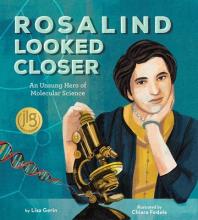
As a Jewish girl in England, Rosalind Franklin grew up against the backdrop of World War II. Fascinated with the natural world, as well as the invisible world that she could only see through her microscope, Rosalind developed a passion for science during a time when few women were recognized for their contributions to the field. Despite her father's discouragement, Rosalind studied chemistry at Cambridge University and went on to study the molecular structure of carbons and DNA molecules. As a scientist, she learned a new technique called X-ray diffraction to take photos of molecular structures. With this technique she captured an image of DNA that was unlike any other image that had been seen before. She saw an image of a helix made up of repeating strands of DNA. It was mesmerizing. This was what the DNA double helix looked like up-close--one of the most important findings of the 20th century.
An unsung hero of molecular science, Rosalind persisted even when men took credit for her work, going on to research the molecular shape of the viruses.
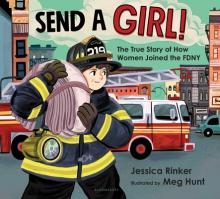
Send a Girl! The True Story of Women Joined the FDNY by Jessica M. Rinker, illustrated by Meg Hunt
Brenda Berkman was often told that she couldn't do certain things because she was a girl. When she grew up, she longed for a job that was challenging, different every day, and required physical and mental strength. In 1977 when the New York City Fire Department finally complied with the Civil Rights Act (from 1964) by allowing women to take the FDNY exam, Brenda jumped at the chance. But the FDNY changed the rules of the exam so women wouldn't be able to pass it. Even a lot of men couldn't pass this new exam. So Brenda Berkman took the FDNY to court. In 1982, they finally made a fair test, and Brenda and 40 other women passed. She then founded the United Women Firefighters, an organization that helps train and prepare women to be firefighters. Brenda went on to serve in the FDNY for 25 years, reaching the positions of Lieutenant and Captain, and was a first responder during the attacks on the Twin Towers on 9/11. Send a Girl! is Brenda Berkman's inspiring story.
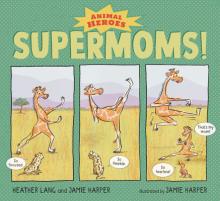
Supermoms! Animal Heroes by Heather Lang and Jamie Harper, illustrated by Jamie Harper
An emperor penguin mom treks up to fifty miles to bring food to her hungry chick. A toothy American alligator carefully carries hatchlings in her mouth, shuttling them safely to the water. A piping plover uses her best acting skills to feign an injury, luring predators away from her offspring. Whether building elaborate burrows, forgoing food for months on end to feed their cubs, toting hundreds of spiderlings on their backs, conducting patient swimming lessons, or fearlessly kicking away hyenas, mothers in the animal kingdom--whatever their species--give it their all (and then some!) to keep their little ones safe, fed, and ready to face the world on their own. This first book in a young series on animal science includes in its back matter a look at the "super" qualities of some of the animals and offers a collection of resources for budding naturalists.
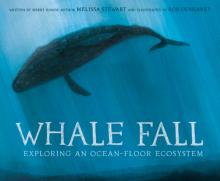
Whale Fall: Exploring an Ocean-Floor Ecosystem by Melissa Stewart, illustrated by Rob Dunlavey
When a whale dies, its massive body silently sinks down, down, through the inky darkness, finally coming to rest on the silty seafloor. For the whale, it's the end of a 70-year-long life. But for a little-known community of deep-sea dwellers, it's a new beginning. First come the hungry hagfish, which can smell the whale from miles around. Then the sleeper sharks begin their prowl, feasting on skin and blubber. After about six months, the meat is gone. Year after year, decade after decade, the whale nourishes all kinds of organisms from zombie worms to squat lobsters to deep-sea microbes.
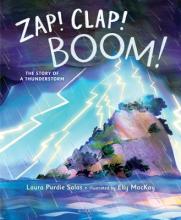
Zap! Clap! Boom! The Story of a Thunderstorm by Laura Purdie Salas, illustrated by Elly MacKay
Follow along as the weather changes, from a blue-sky day to a brewing storm, from a brewing storm to a dazzling downpour, and from a dazzling downpour to the breathtaking moment when the sky emits a- ZAP! CLAP! BOOM!
Older Readers
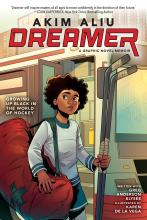
Akim Aliu -- also known as "Dreamer" -- is a Ukrainian-Nigerian-Canadian professional hockey player whose career took him all around the world and who experienced systemic racism at every turn. Dreamer tells Akim's incredible story, from being the only Black child in his Ukrainian community, to his family struggling to make ends meet while living in Toronto, to confronting the racist violence he often experienced both on and off the ice. This is a gut-wrenching and riveting graphic novel memoir that reminds us to never stop dreaming and is sure to inspire young readers everywhere.

This accessible nonfiction compendium explores the creation of 10 global landmarks, from the first spark of an idea to the final layer of paint. Acclaimed educator Rekha Rajan encourages readers to see themselves as the engineers, builders, architects, and more through interactive stories and a unique structure. Ideal for any grade schooler with an interest in STEAM!

Adapted from the adult nonfiction book of the same title, Can I Recycle This? is a both fun and educational book to teach the littlest readers the hows and whys of recycling, and to introduce them to the responsibility that we all have to protect the environment.
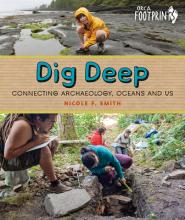
Dig Deep: Connecting Archaeology, Oceans, and Us by Nicole F. Smith
From harvesting herring eggs to hunting humpback whales, humans have had a relationship with the world's oceans for more than 100,000 years. In Dig Deep: Connecting Archaeology, Oceans and Us, young readers unearth what our ancestors left behind at archaeological sites around the world and examine how tools, campsites, fishing technologies and even garbage can show us how our ancestors lived and how they used the ocean. These discoveries can unearth clues to help keep our oceans healthier today and in the future.
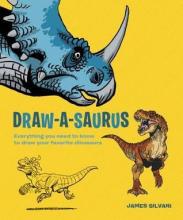
Draw-a-saurus: Everything You Need to Know to Draw Your Favorite Dinosaurs by James Silvani
This in-depth yet accessible dinosaur drawing guide combines humor, creativity, and the latest dino research to show artists young and old how to breathe life into drawings of their prehistoric favorites.
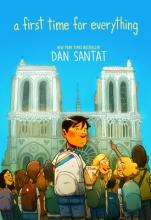
A First Time for Everything by Dan Santat
A middle grade graphic memoir based on bestselling author and Caldecott Medalist Dan Santat's awkward middle school years and the trip to Europe that changed his life.
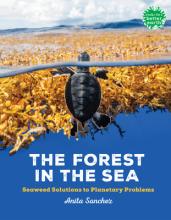
The Forest in the Sea: Seaweed Solutions to Planetary Problems by Anita Sanchez
Meet an unlikely climate change hero- the wet, slimy stuff known as seaweed. Imagine forests where you can float weightlessly among schools of fish. Huge green pastures where sea turtles graze. Forests that capture carbon from seawater and breathe out oxygen. The answers to many of our planet's problems may lie underwater, in these forests of seaweed.
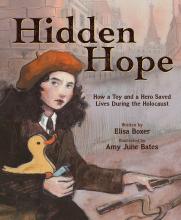
During World War II, families all across Europe huddled together in basements, attics, and closets as Nazi soldiers rounded up anyone Jewish. The Star of David, a symbol of faith and pride, became a tool of hate when the Nazis forced Jewish people to carry papers stamped with that star, so that it was clear who to capture. But many brave souls dared to help them. Jewish teenager Jacqueline Gauthier, a member of the French Resistance who had to conceal her identity, was one who risked her life in secret workshops, forging papers with new names and without stars in order to help others escape. But how to get these life-saving papers to families in hiding? An ordinary wooden toy duck held the answer, a hidden compartment: hope in a hollow.
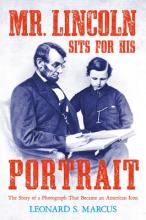
On February 9, 1864, Abraham Lincoln made the mile-long walk from the Executive Mansion to photographer Mathew Brady's Washington, DC, studio, to be joined there later by his ten-year-old son, Tad. With a fractious re-election campaign looming that year, America's first media-savvy president was intent on securing another portrait that cast him in a favorable light, as he prepared to make the case for himself to a nation weary of war.
At least four iconic pictures were made that day. One was Lincoln in profile, the image that later found its way onto the penny; two more would be adapted for the 1928 and 2008 five-dollar bills. The fourth was a dual portrait of Lincoln and Tad. The pose, featuring Lincoln reading to his son, was a last-minute improvisation, but the image that came of it was--and remains--incomparably tender and enduringly powerful.
Immediately after the president's murder the following year, the picture of Lincoln reading to his son became a mass-produced icon--a cherished portrait of a nation's fallen leader, a disarmingly intimate record of a care-worn father's feeling for his child, and a timeless comment on books as a binding force between generations.

Thomas H. Begay and the Navajo Code Talkers by Alysa Landry
Thomas H. Begay was one of the young Navajo men who, during World War II, invented and used a secret, unbreakable communications code based on their native Diné language to help win the war in the Pacific. Although the book includes anecdotes from other code talkers, its central narrative revolves around Begay. It tells his story, from his birth near the Navajo reservation, his childhood spent herding sheep, his adolescence in federally mandated boarding schools, and ultimately, his decision to enlist in the US Marine Corps.